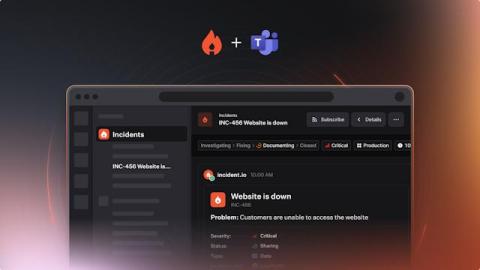Introducing: incident.io for Microsoft Teams
There’s a major outage. Support tickets are mounting. Everybody from engineering to legal is scrambling for information. You have more Teams notifications clamouring for attention than you do minutes to address them, and it’s hard to know where to begin. What comes next is a balancing act—mitigating the impact, updating colleagues, managing action items, or updating a status page that will be seen by millions.










